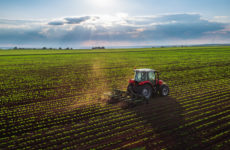More than half of the world’s land surface is used for livestock production. In Australia, there are 43,753 farms producing beef cattle alone, accounting for 50% of all agriculture farm activity. Thus, if you’re in the farming industry – it pays to invest in better Livestock Management in Australia.
Healthier, low-stress livestock handling is proven to deliver more efficient results. Improving the overall health and production of your livestock and farm, resulting in higher quality products.
Encourage efficient Livestock Management in Australia
To encourage efficient Livestock Management in Australia, here are a few tips to follow:
1. Consider Seasonal Factors
Seasonal changes and various environmental conditions can have a significant impact on your livestock.
Excessive heat, for example, is a key contributor to heat stress in animals. Changes in humidity, rainfall, lack of shade, high ongoing minimum, and maximum temperatures, and limited air movement can affect your livestock well beyond seasonal weather changes.
To minimize seasonal stress on your livestock, ensure you have the right shelter and plenty of available drinking water. Canvas shelters, shade sails, and other adequately shaded solutions will keep your animals comfortable and help maintain their health and productivity. Water systems should also be installed and make sure your farm isn’t too cramped.
Excessive Heat Loads (EHL) affect milk production, fertility, and your livestock’s energy levels and appetite. However, heavier cattle or livestock with existing health conditions and darker-colored coats are at more risk.
Other environmental changes, such as tougher drought seasons, will need feeding plans in place. Keeping stock and keeping animals well-fed is challenging during these seasons, check out these tips here to help you prepare.
2. Include Your Animals in Farm and Household Emergency Plans
It’s your responsibility to plan and prepare for your animals in case of an emergency.
Consider the risks of your farm and create an action plan for each. All livestock should be included in your household and farm emergency plans, with local council, vet, and animal welfare phone contacts together.
If you’re unsure about the risks of natural hazards in your area, check with your local council to determine what emergency plans are in place for temporary animal shelters if there’s a major emergency or disaster.
Your plan should include clear action points for whether you move your livestock or stay when a warning is issued. Update emergency plans annually and ensure all animals are properly identified with tags, microchips, or branding should a disaster occur.
3. Invest in the Right Tools
Use technology to your advantage and invest in livestock management software to keep better tabs on your farm. Record keeping, especially on larger farms, is a crucial part of good livestock management.
Tools such as this one can help increase your farm’s productivity and save time by recording stock movements and livestock reports to enable smarter decisions to be made. Reports will gather data on performance analysis and production costs, helping to eliminate feed wastage or unnecessary expenses.
Look for software that includes a farm safety app as well, which can be added to your emergency plans.
4. Implement Good Yard Design, Equipment and Safety
To improve yard safety, consider the design of your sheds, cradles, and farm yards. They should be a suitable size and strength for the livestock being handled, with well-positioned gates and access ways. Avoid yards with blind corners and sharp turns.
Australia’s red meat and livestock industry turns over approximately $65 billion each year. To ensure your animals and farm production are healthy and efficient, good livestock management is critical.
Author Bio
This article is written by Jayde Walker (Ferguson), who recommends Bee Jays Canvas –manufacturers of canvas shelters designed to assist with better livestock management. You can catch her on LinkedIn.




